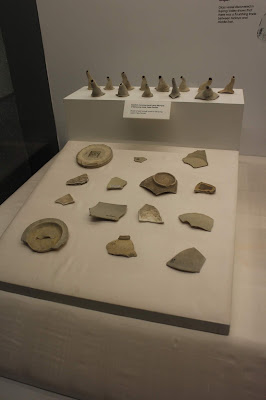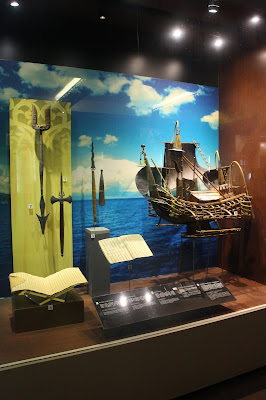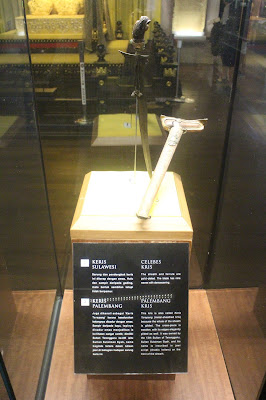Visiting a museum may not be everyone’s idea of a fun time but it is a recommended activity by which tourists can learn about many facets of the country being explored. It is a great place to learn about the history, culture, achievements, and the honored men and women who built that nation. So in our travels, we would try and squeeze in, if possible, a museum visit in our itinerary.
The good news is that the National Museum of Malaysia is within the route of the KL Hop On Hop Off Bus making it easier to include it as a stop.
Read: City Sightseeing Onboard the KL Hop On Hop Off Bus
The Museum
After Malaysia's independence in 1957, the government conceived an idea to build a museum that will house the national historical and cultural treasures of the country. As such, a building that would house the National Museum was commissioned on the site of the former Selangor Museum which was destroyed at the end of World War II. The building is designed in the palatial style of Rumah Gadang, an aspect of Minangkabau architecture. The three-storey structure is supported by 26 concrete columns, a concept based on the combination of 13 columns in the east wing and 13 columns in the west wing, reflecting the 13 states that form Malaysia.
 |
| Facade of Muzium Negara |
The museum houses four galleries - the Pre History and Malay Kingdoms in the upper ground floor, and the Colonial Era and Malaysia Today in the second floor. There is also a spacious Central Hall, adorned by geometric mosaic tiles given by Pakistan, that houses temporary and special exhibitions.
Here are photos of the first two galleries and the exhibits that will make you want to head off to the museum in your visit to Kuala Lumpur.
Pre History Gallery
This gallery features the formation and origin of the early community in Malaysia. The exhibits include Paleolithic stone tools, various Neolithic pottery and jewelry, artifacts of Hindu-Buddhist heritage during the Proto history of Malaysia, and the replica of the 10,000 year-old Perak Man, considered as the oldest and most complete skeleton discovered in Southeast Asia.
 |
Going into the gallery, guests will be welcomed by an introduction
to the archaeological history of Malaysia |
 |
| Wall display explaining the geology of the Southeast Asian landform |
 |
| Archaeological exhibits in glass enclosures |
 |
| Depiction of lives of early humans inside cave settlements |
 |
| Early humans using natural resources for their daily activities |
 |
| Cave paintings of hunting activities |
 |
| Replicas of early human skulls |
 |
| Exhibits trace the history of earliest humans in Asia |
 |
| Ancient burial practices are highlighted in the exhibits |
 |
The 10,000 year old Perak Man, one of the
interesting collections of the museum |
 |
| Evidences of ancient hunting and gathering communities |
 |
| Stone tools used 10,000 to 70,000 years ago |
 |
| Cloth making tools found in early societies |
 |
| Prehistoric clay and pottery from Bukit Keplu |
 |
| Pottery from the Neolithic Age |
 |
Bronze artifacts found in Butu Buruk, featured here
is a bronze drum |
 |
| Shards of pots found in Pulau Tioman |
 |
The megaliths of Pengkalan Kempas,
named The Sword and The Rudder |
Malay Kingdoms Gallery
The Malay Kingdoms Gallery traces the development of Malay civilization through the formation of the kingdoms in the Malay Peninsula and Borneo Islands. This gallery also presents historical evidences of the Malay civilization and the existence of an organized and systemic form of government of the Malays. The main focus of this section is the Melaka Sultanate, which was the golden period in the history of the kingdoms.
 |
The Royal Wall and Door of the Palace of Setul,
Setul was once part of Malaysia and is now part of Thailand |
 |
| The centerpiece of the gallery, the Royal Throne of Perak |
 |
| The exhibits and artifacts inside the Malay Kingdoms Gallery |
 |
| The exhibits and artifacts inside the Malay Kingdoms Gallery |
 |
| The mural of Hang Tuah, a legendary Malay warrior and admiral |
 |
| Carved panels from the Candi Borobudur, a famous Buddhist temple in Central Java |
 |
| Figure head of a Malay Royal Boat |
 |
A Makara found at Kampung Sungai Mas
which takes the form of an elephant and a fish |
 |
| Bronze statue of Avalokitesvara dated between 7-12 cen AD |
 |
| The Jalong Statue |
 |
Model of a Majapahit ship, Champa Manuscript and
weapons such as Candak, Dwisula, and Wiro Sableng |
 |
Wooden Box, Door Panel with Verses, Vest with Verses,
and Wood with Islamic Calligraphy and Motifs |
 |
| A handwritten Quran |
 |
A century old gold buckle inlaid with gemstones
used by members of the royal family |
 |
A 200-year old scent bottle carved with four-petalled
flower motif |
 |
A celepa or a gold tobacco box owned by
Sultan Zainal Abidin I |
 |
| A betel set used to hold the materials for taking betel |
 |
Kris from Celebes and Palembang, the Palembang Kris
was owned by Sultan Sulaiman Syah |
 |
A dragon cannon with Gantang, Copper Gong, Jewel Box,
Copper Water Container, Cupak and Kendi |
 |
| Sundang or Suluk and shields from Sulu |
 |
A diorama showing the conversion of Melaka ruler Saiyid Abdul Aziz
into Islam |
 |
Map showing the role of Melaka in the dissemination of Islam into the
archipelagos of Malaysia, Indonesia, and the Philippines |
The next post will feature the photos taken from the Colonial Era and Malaysia Today Galleries of Muzium Negara. Read the post: In Photos: Muzium Negara's Colonial Era and Malaysia Today Galleries (Part II)
So what do you think of the exhibits in the first two galleries of the museum? Please leave your comments or questions below.
Also, make sure to check out our other KL posts:










































super
ReplyDelete